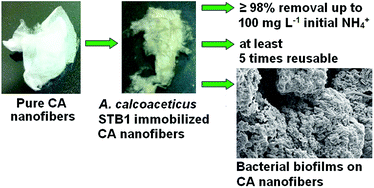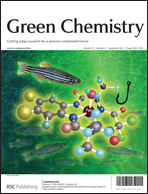Efficient ammonium removal from aquatic environments by Acinetobacter calcoaceticus STB1 immobilized on an electrospun cellulose acetate nanofibrous web
Abstract
A novel biocomposite material was developed by immobilizing an ammonia-oxidizing bacterial strain, Acinetobacter calcoaceticus STB1, on an electrospun porous cellulose acetate (CA) nanofibrous web. Ammonium removal characteristics of the STB1 immobilized CA nanofibrous web were determined at varying initial ammonium concentrations, and removal rates of 100%, 98.5% and 72% were observed within 48 h for 50 mg L−1, 100 mg L−1 and 200 mg L−1 samples, respectively. Most of the ammonia is inferred to be converted into


 Please wait while we load your content...
Please wait while we load your content...